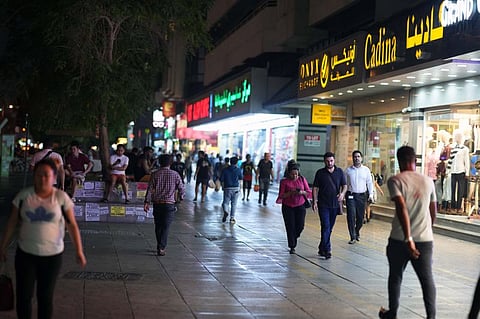Dubai’s crackdown on illegal room partitions: What renters need to know
Understand rental rules, landlord-tenant rights, and safety requirements

Dubai: Dubai authorities have stepped up inspections on illegal partitions and overcrowded housing.
Dubai Municipality, in coordination with the Dubai Land Department and Civil Defense, is cracking down on unapproved modifications and unsafe living arrangements across residential areas like Deira, Al Riqqa, Satwa, Al Barsha, and Al Raffa.
If you’re a tenant, landlord, or sharing a space in Dubai, here’s what you need to know about subletting, adding partitions, and occupancy rules - according to Dubai Rental Law (Law No. 26 of 2007, amended by Law No. 33 of 2008).
Is subletting legal in Dubai?
Subletting is only legal if you have written permission from the landlord. Under the law, tenants cannot rent out part or all of the property to someone else, such as through bed spaces or shared rooms, unless the landlord gives written approval.
Even with permission, the unit must be used as agreed in the tenancy contract. For example:
If the property is leased for private residential use, you cannot use it for business purposes.
You cannot rent out rooms to unrelated individuals unless allowed by your landlord.
Subletting without approval is a breach of the tenancy contract and can lead to eviction or legal action.
Can you add partitions to a villa or apartment?
Tenants are not allowed to make structural changes, like installing drywall or wooden partitions without written consent from the landlord. More importantly, such changes also need approval and inspection by Dubai Municipality and Civil Defense, especially to ensure fire safety standards are met.
If a tenant makes illegal modifications, the landlord has the right to file a complaint with the Rental Disputes Centre (RDC) and request immediate eviction.
Landlords themselves must also get official permits before making any modifications. Failure to do so can result in fines or legal action.
Do all residents need to be listed on the Ejari contract?
Every occupant should be registered in the Ejari system. This helps maintain transparency with Dubai authorities and ensures legal compliance.
If someone is living in a property but not listed on the Ejari, this could be flagged during inspections and seen as unauthorised subletting or overcrowding. Landlords and tenants can both face consequences for this.
To update the Ejari, tenants or landlords can visit any real estate trustee office or use Dubai Land Department’s online services.
Are there limits on how many people can live in one unit?
Dubai has strict occupancy limits for both villas and apartments. These limits are in place to prevent overcrowding and reduce safety risks.
Different residential areas are subject to the jurisdiction of various authorities, such as Dubai Municipality, Tecom, Meydan, Tarakhees and etc.
While the law doesn’t mention a fixed number for all properties, these authorities may establish guidelines specifying the minimum square footage per person allowed for occupancy, typically ranging from 40 sq ft to 200 sq ft per person.
Why are illegal partitions and overcrowding dangerous?
These setups may:
Block emergency exits
Overload electrical circuits and utilities
Violate fire safety codes
Make it harder for emergency services to respond
Unapproved modifications often violate fire safety codes, which is why Dubai Civil Defense plays a key role in inspections. In some past incidents, fires in overcrowded properties have resulted in injury or death, making enforcement a public safety priority.
What should you do before sharing a rental?
Always:
Get written permission from your landlord before subletting or making changes
Make sure all occupants are listed in the Ejari contract
Comply with Dubai Municipality and Civil Defense regulations
Before sharing a flat or installing partitions, check your lease and speak with your landlord. Following Dubai’s housing rules doesn’t just protect your legal rights, it keeps your home safe too.
Sign up for the Daily Briefing
Get the latest news and updates straight to your inbox







